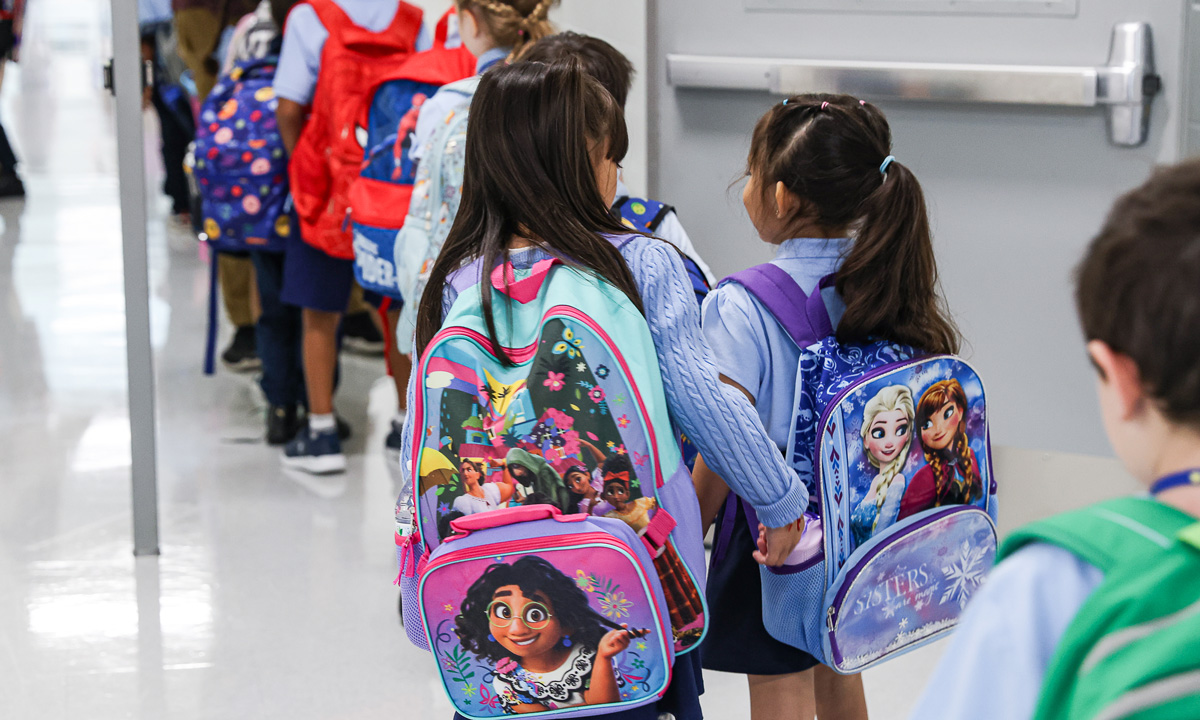As a New School Year Begins, Ensuring All Students Feel a Sense of Belonging
Wiener: School safety, parent engagement, relevant lessons, free meals can send a welcoming message — and boost attendance, grades & graduation rates.

Get stories like this delivered straight to your inbox. Sign up for The 74 Newsletter
This year, I’ve been speaking with everyday Americans to hear their ideas about the purpose of public schools and how to improve them. One aspiration cuts across all perspectives: Everyone wants their children to feel a sense of belonging in school. Parents can’t understand why this isn’t more of a priority in education policy, and they are right. Research and experience establish that belonging is essential for addressing the most vexing educational challenges, including lagging academic achievement, chronic absenteeism and student mental health.
Truly preparing young people to thrive as adults and stewards of American democracy means focusing on fostering belonging in schools.
When students experience belonging in school, the benefits are both immediate and long-lasting. In the short term, it improves attendance, grades and graduation rates. Long-term benefits are observable even 20 years later, including lower rates of drug abuse, mental health problems and involvement in violence, either as victims or perpetrators.
As compelling as these findings are, data reveal a crisis of student belonging. Recent data from the federal Centers for Disease Control and Prevention shows that only 55% of young people feel connected to people at their school, with LGBTQ+ students, those with disabilities and students of color faring the worst. This disconnection is fueling a mental health crisis. In 2022, 20% of all American high school students seriously considered suicide; 21% of female students made a suicide plan and 13% actually attempted it. This magnitude of alienation and despair shocks the conscience and ought to provoke a robust response. Banning cellphones and adding therapists in schools may be necessary, but definitely are not sufficient; America needs a proactive agenda to make schools healthier places for learning and connection.
Chronic absenteeism further illustrates this crisis. Over 30% or more of students were chronically absent in more than half of U.S. high schools in 2021-22. This instability makes building a sense of community nearly impossible.
Despite the clear link between belonging and positive outcomes, it has been largely overlooked in education reform efforts of the past 40 years, barely registering in school quality metrics. Belonging is often dismissed as being soft, despite its crucial role in student success. Research shows that having at least one caring adult, access to clubs and sports and culturally inclusive curricula are key to creating a sense of belonging. However, these are opportunities often unequally distributed or even restricted in some states. Welcoming parents in schools also boosts student belonging, yet fewer than 50% of Colorado parents report feeling a sense of belonging in their child’s school — the lowest of any surveyed setting.
Education leaders often tell me they value belonging but wonder whether it’s possible to measure it accurately. Doing this is actually very straightforward: Ask people. Students and teachers can reliably assess school life quality, and school climate surveys strongly predict student outcomes. Policymakers should use these to create a baseline understanding of where schools stand and then implement research-backed strategies that build belonging:
Start with physical safety. The latest CDC data reveal that teens feel less safe in school and report more bullying than a couple of years ago, and teachers increasingly are raising alarms about disciplinary problems that aren’t being addressed. Restorative practices, such as the ones implemented in Chicago Public Schools, can reduce suspensions and improve climate.
Then, situate schooling in the context of community. Structuring lessons about the places students are from validates that their communities are worthy of study and helps forge connections between kids’ lives inside and outside of school. Curricula like BMore Me in Baltimore ground students in their city’s history, fostering a sense of belonging; partners like Community Share help identify assets and potential mentors in the surrounding area. A full-time community schools coordinator can integrate local leaders and partners into the educational experience, creating coherence between students’ lives inside and outside of school.
Making schoolwork meaningful is also critically important. Strategies for building students’ belonging won’t work if they don’t run directly through academic learning experiences. In a recent focus group I conducted, a student lamented that her middle school mostly prepares her to succeed at more school when she wants to be getting ready for work and life. Students want to be challenged and for their classwork to model real work that is valued out in the world. Project-based learning, like EL Education’s expeditions are a great resource — and are open source!
Lastly, ask the real experts. Students and families know what it takes to establish belonging; School administrators and teachers should solicit their opinions regularly and act on their insights. Annual school climate surveys provide important data, but shorter surveys can be administered more frequently to give teachers real-time feedback that can inform ongoing improvement. Such tools are most effective when paired with direct engagement, using resources like Aspen’s Coming Back to Climate toolkit for student focus groups and empathy interviews.
Policymakers can fund these strategies and do more, like making school meals free and eliminating activity fees. Policymakers can ensure schools are attractive, inviting and healthy, are equipped with air conditioning and proper ventilation and don’t expose children to toxins. As a former education civil rights lawyer, I saw how squalid school buildings signal to students that they don’t belong.
Optimizing schools for belonging benefits broader society by creating civic connection and commitment, which is crucial to America’s diverse democracy. In the workplace, as artificial intelligence and automation displace rote tasks, skills like teamwork, collaboration and collective problem-solving will be highly valued. Cultivating belonging in schools not only enriches individual lives, but drives economic development and social cohesion.Public schools are one of America’s proudest innovations, embodying the idea of E Pluribus, Unum. Every one of America’s cataclysmic ruptures – the Civil War, the Great Depression, the Civil Rights Movement – has centered on core questions of who belongs, and all have been resolved to expand belonging. Seventy years after Brown vs. Board of Education, this generation is called to renew the promise of public education, and of America, by recommitting to the original, as-yet unmet creed of universal belonging.
Get stories like these delivered straight to your inbox. Sign up for The 74 Newsletter

;)
